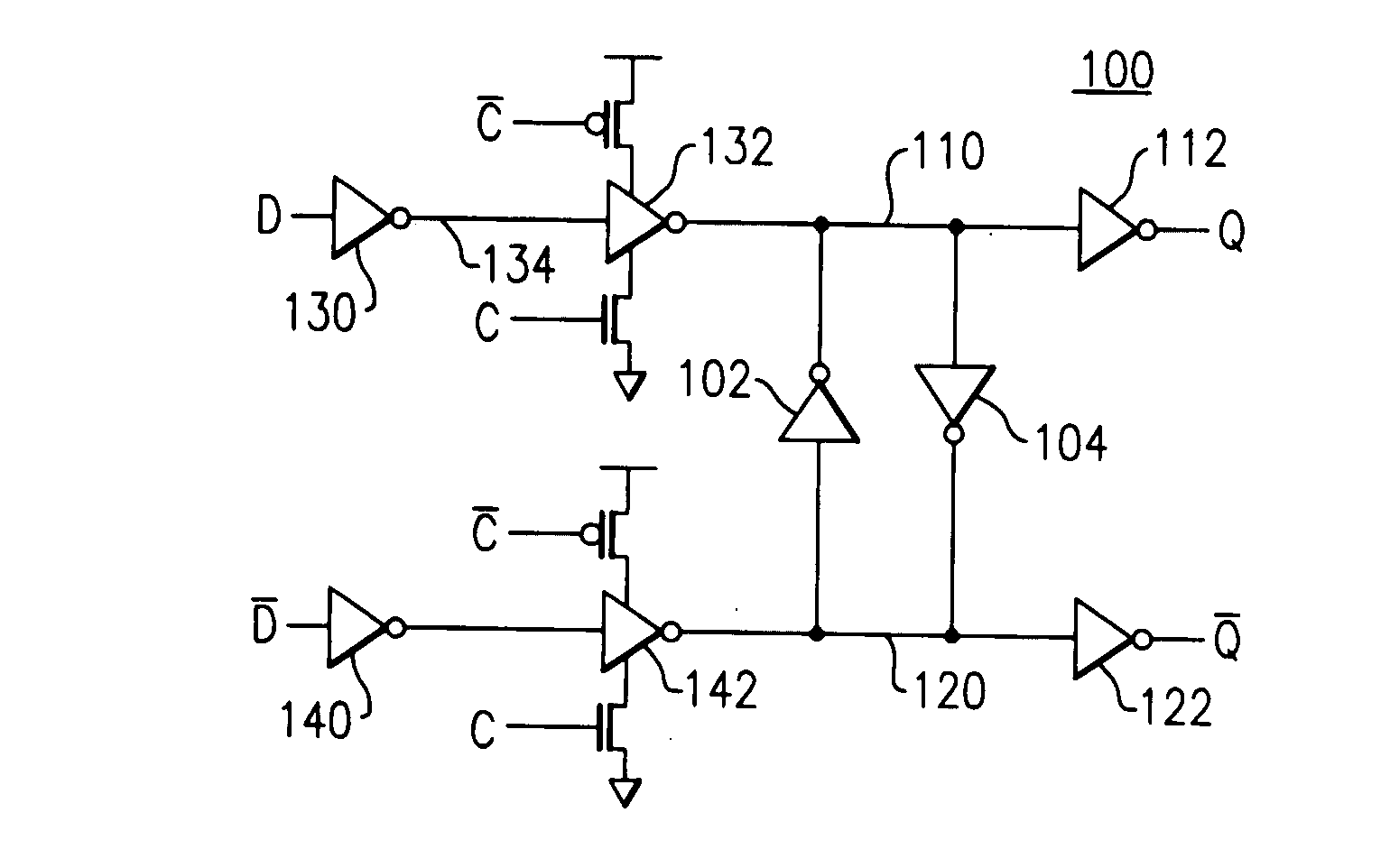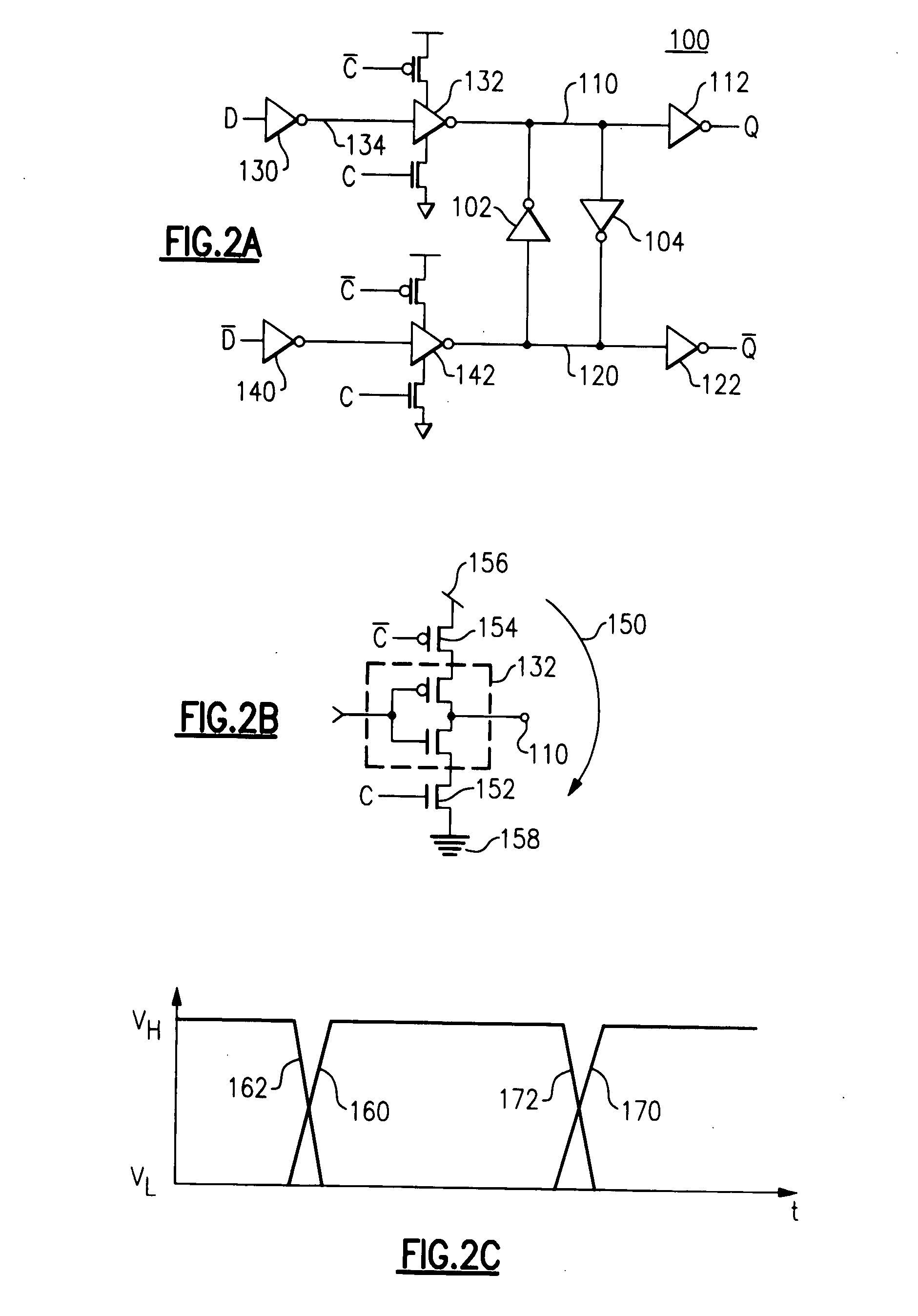Design structure for CMOS differential rail-to-rail latch circuits
a latch circuit and design structure technology, applied in the field of metal oxide semiconductor circuits, can solve problems such as lack of synchronization between true output q and latch circuits
- Summary
- Abstract
- Description
- Claims
- Application Information
AI Technical Summary
Benefits of technology
Problems solved by technology
Method used
Image
Examples
first embodiment
[0024]Commonly owned U.S. patent application Ser. No. 11 / 668,137 filed Jan. 29, 2007 to Joseph Natonio et al. entitled “CMOS Differential Rail-to-Rail Latch Circuits” is incorporated by reference herein. FIG. 2A illustrates a differential CMOS latch in accordance with the invention. As a CMOS circuit, the latch includes a pair of cross-coupled CMOS inverters 102, 104, which serve to maintain the logic states of a first node 110 and a second node 120 at rail-to-rail logic levels. With rail-to-rail logic levels, the high logic state is represented by a steady state voltage which usually is the same as a voltage level at which power is supplied to the source terminal of the pMOS device of each cross-coupled inverter in the latch. The low logic state usually is represented by ground, the voltage to which the source terminal of the nMOS device of each cross-coupled inverter of the latch is connected. By the action of the cross-coupled CMOS inverters 102, 104, when the first node 110 is a...
second embodiment
[0029]FIG. 3 illustrates an edge-triggered master-slave (“MS”) flip-flop 200 in accordance with the invention. The MS flip-flop includes two rail-to-rail differential CMOS latches 100A, 100B (FIGS. 2A-2C), arranged in series, such that the output signals / Q′ and Q′ of the first latch 100A are applied to the inputs of inverters 130B and 140B of the second latch 100B. As in the case of the differential CMOS latch 100, the output signals Q and / Q are differential signals, i.e., simultaneously swinging true and complementary signals with rail-to-rail signal levels.
[0030]In the MS flip-flop, inverters 132B and 142B of the second latch 100B are timed differently from the inverters 132A and 142A of the first latch 100A. In this case, the complementary clock signal / C is applied to the pMOS devices 154B, and the true clock signal C is applied to the nMOS devices 152B. On the other hand, in the first (master) latch 100A, the true clock signal C is applied to the pMOS devices 154A, and the co...
PUM
 Login to View More
Login to View More Abstract
Description
Claims
Application Information
 Login to View More
Login to View More - R&D
- Intellectual Property
- Life Sciences
- Materials
- Tech Scout
- Unparalleled Data Quality
- Higher Quality Content
- 60% Fewer Hallucinations
Browse by: Latest US Patents, China's latest patents, Technical Efficacy Thesaurus, Application Domain, Technology Topic, Popular Technical Reports.
© 2025 PatSnap. All rights reserved.Legal|Privacy policy|Modern Slavery Act Transparency Statement|Sitemap|About US| Contact US: help@patsnap.com



